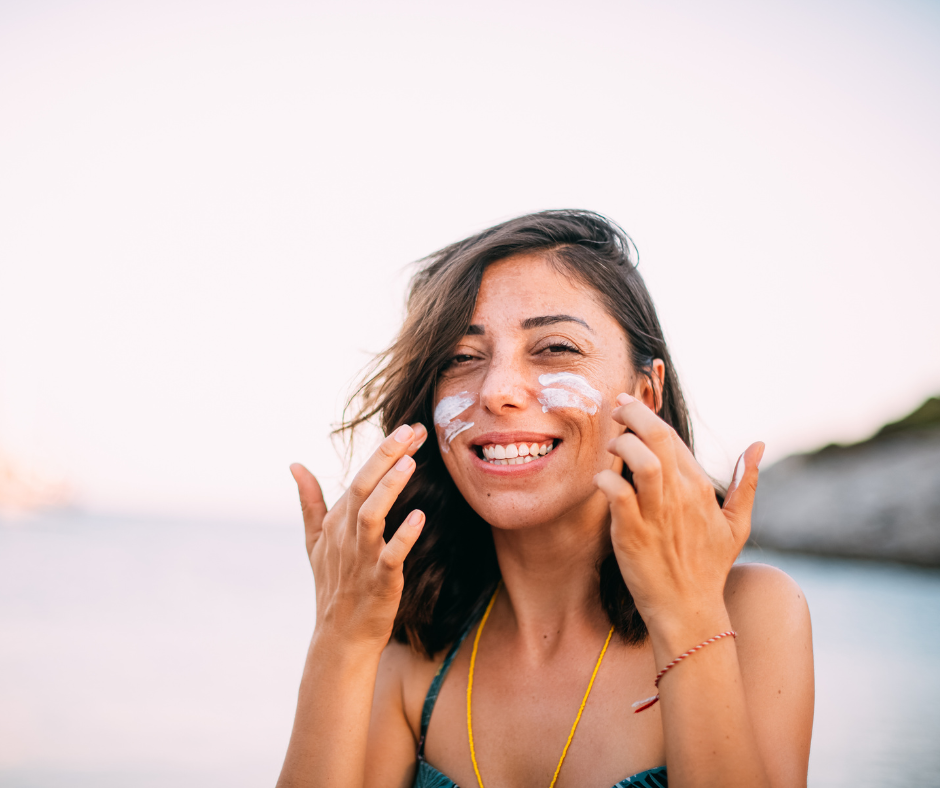Is Sunscreen Safe?
The safety of sunscreen has been a hot topic for a few years now. Sure, we all want to protect our skin from sun damage, but what if there was a better way? With many people slathering on layers before enjoying the summer sun, it is important to think about what is going on your skin…and in your system. Is the sunscreen you use really safe?
Harmful Ingredients
Within minutes, the ingredients in sunscreen are actually absorbed into the skin and reach the bloodstream. One of the most commonly used chemicals in sunscreens is oxybenzone. This chemical is used to absorb UV light and prevent it from penetrating the skin. However, research has shown that oxybenzone can be absorbed through the skin and into the bloodstream, where it can mimic hormones in the body and disrupt the endocrine system. Studies have linked oxybenzone to hormonal imbalances, reduced fertility, and an increased risk of certain cancers.
Another common chemical in sunscreens is octinoxate, which is also used to absorb UV light. Like oxybenzone, octinoxate can be absorbed through the skin and has been linked to endocrine disruption. In addition, octinoxate has been found to cause damage to coral reefs and other marine ecosystems when it enters the water through swimmers’ skin.
Complicated Chemicals
Other chemicals that may be found in sunscreens, such as homosalate, avobenzone, and octocrylene, have also been found to have potential health risks. These chemicals can be absorbed through the skin and have been linked to hormone disruption, allergic reactions, and skin irritation.
Repeated exposure only raises the risk of a reaction. Most sunscreen products need to be reapplied multiple times throughout the day to stay effective. This is particularly concerning for children, who may be exposed to higher levels of sunscreen chemicals due to their smaller size and developing bodies. Most parents also opt for the spray version since it’s so easy to apply. When the product is sprayed, the toxic particles are easy to breathe in. Children who aren’t paying attention (most children– Hello, they are at the pool!) are the most likely to breathe in the fine mist. Research shows that inhaled nanoparticles enter the bloodstream even quicker through the lungs. Yuk!
Safer Alternatives:
Cover up! Getting some sunshine is super beneficial for vitamin D and melatonin production. However, if you are planning on being in the sun for a prolonged period of time, it may be best to use loose-fitting or SPF-rated clothing to help shield your skin from the sun. It may also be best to avoid the hottest times of the day when the sun’s rays are more intense. Usually, this is from 11 am to 1 pm.
Find Safer Alternatives: Natural sun-blocking zinc is a great alternative to the harsh chemicals in most sunscreen products. Mineral-based sunscreens are naturally occurring and are generally much safer. This form of sunscreen does leave a bit more of a white film on the skin; a small trade-off when it comes to protecting yourself and your children from harsh chemicals.
Eat foods that naturally protect your skin!
It’s true! What you eat has the potential to help prevent sunburns.
Here are some of the top foods you’ll want to incorporate this summer:
- Sweet Potatoes contain antioxidants that act as a defense shield against the sun
- Olive Oil is a natural sun blocker. It actually contains high levels of a plant peptide called squalane and is known to protect the skin’s sensitive lipids or fats.
- Strawberries actually contain more vitamin C than citrus fruit and plays a main role in fighting free radicals which can lead to negative skin issues.
- Avocado is high in vitamin E and also fights free radical damage from the sun…not to mention signs of aging, such as wrinkles brought on by UVA rays.
- Salmon is rich in Omega-3’s and guards against sunburns and changes in DNA which can lead to cancer.
- Pomegranate seeds have been shown to protect your skins sensitive lipid membrane from the damage imposed by UVA & UVB rays
We all need sunshine. However, knowing your limits is the best way to avoid a sunburn and possible problems. When you are planning to be out in the sun for longer periods of time, plan ahead and use clean, mineral-based products that work well for your family. Luckily, there are many companies now producing cleaner products that are safe for all ages.
